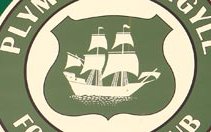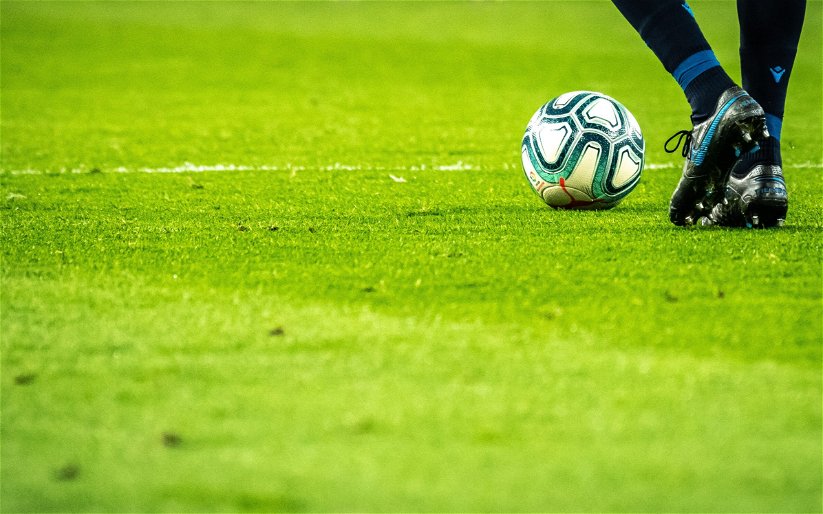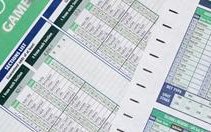The Plymouth Argyle ‘Where Are They Now’ series goes further back in time with Peverell Green directing the spotlight on Maurice Tadman.
MAURICE TADMAN – Born 28th June 1921 Rainham, Essex.
Maurice began his footballing career in non-league football playing for Bexleyheath and Welling before being signed by Charlton in 1938, joining his older brother George who was already playing for them. Unfortunately the Second World War halted his career in its tracks and he wasn’t able to play competitive football until he returned to the club in 1946.
He was a prolific goal scorer for the reserves but found it difficult to break into the first team, in two seasons he only made three appearances, and decided to look elsewhere for a regular first team place.
He joined Argyle for £4,000 at the start of the 1947-48 season, signed by the then manager Jack Tresadern, scoring on his debut in a 6-1 defeat away to Newcastle in front of 52,642 Geordies.
In his first season he made 19 league and one cup appearances scoring seven goals, three of them coming over Christmas, he scored in a 1-1 draw at Fulham on Christmas Day and twice in a 3-2 win in the reverse fixture on Boxing Day. Argyle finished 17th in Division 2 (now the Championship).
The following season he made 30 league and one cup appearances, more than doubling his first seasons tally with fifteen goals.
Relegation was narrowly avoided by just one point, Argyle finished in 20th on 36 points with Notts Forest on 35. This was in a division featuring current Premiership teams, Fulham, West Brom, Southampton, Spurs, West Ham and QPR.
1949-50 wasn’t a good season for Argyle, the club finished in 21st position and were relegated to Division Three South, and Maurice didn’t fare much better only scoring nine goals from 29 appearances with Argyle only scoring 44 league goals for the whole season. Between February 4th and April 8th they played 10 games and only scored two goals, and they came in the same match, in a 2-2 draw away to Grimsby. During this barren run they played five matches at Home Park and despite failing to score in any of them the average crowd was still 21,120.
The following season, saw a change in Argyle’s fortunes and saw Maurice become a defenders nightmare, it was the start of a spell that would see him top the Argyle scoring charts for four consecutive seasons.
On 14th October he scored four in a 5-1 thrashing at home to Aldershot. He followed it up with another four on 18th November in a 6-0 rout away to Brighton and the following week scored a hat trick in a 3-0 win away to Gainsborough Trinity in a first round FA Cup match.
Between 7th October and 25th November Argyle played eight games in seven weeks scoring 31 goals with Maurice getting 17 of them. Argyle finished the season in fourth with Maurice scoring 23 goals from 40 appearances.
1951-52 saw Maurice and his strike partner George Dews become one of the most feared duos in football, between them they scored an incredible 52 goals, Maurice netted 27 and George 25, when, if ever, did a player score 25 goals and not end up as the clubs leading goalscorer for the season.
Of the 46 league games played at least one of the two scored in 33 games, in fact Argyle only failed to score in four matches. On five occasions Argyle scored five goals in a game, going one better against Shrewsbury who conceded six at Home Park in December. Although they were in the lowest division, on seven occasions over 20,000 turned up at Home Park, strangely enough the two biggest gates saw the game end in a 2-2 draws on 12th April 31,755 saw Argyle play Brighton with Maurice scoring the second goal and in the final home game against Torquay 28,728 both George and Maurice scored.
Argyle finished the season as champions by five clear points from runners up Reading with 107 goals being scored.
The move back to Division 2 was expected to be a season of consolidation, how wrong the press of the day were, with Argyle finishing in fourth, the closest they had ever come top seeing top flight football played at Home Park, it still remains the highest ever finish the club has achieved.
Maurice was still a regular goalscorer ending up with 15 goals from 39 league appearances his partnership with George Dews wasn’t as lethal with George only managing five goals, Gordon Astall and Alex Govan both helped out with the scoring though.
Fans expectations for the 1953-54 season were high, unfortunately the team weren’t able to deliver the Division 1 football the supporters craved, it wasn’t until the eighth match of the season before they registered a win, 1-0 away at Swansea, it was October 10th before Argyle won at Home Park in a 4-0 rout of eventual runners up, Everton, although they did get their revenge in February when they beat Argyle 8-4 at Goodison Park.
Maurice still ended up as leading goalscorer with his eleven goals coming from 32 appearances and Argyle finished in 19th position, scoring 65 goals, exactly the same as the previous season when they finished fourth.
1954-55 was to be Maurice’s last at the club, he was now 33 and was no longer the feared marksman he had been. His final game came on 12th February in 2-0 home defeat to Blackburn; his final goal had come in a 1-1 draw at home to West Ham in September. It was his only goal that season from seven appearances.
Maurice Tadman is Argyle’s fifth highest ever goalscorer with 112 goals, all in the league, he never scored a cup goal, only Sammy Black 184, Wilf Carter 148, Tommy Tynan 145 and Jack Leslie 136 scored more than him, add Jack Vidler with 103 goals and you have the only six men ever to have scored 100 goals for the club, a list we may not see added to, certainly not in my lifetime.
Even at the age of 34 Maurice wasn’t finished with football, in July 1955 he moved to Belfast Distillery as a player-manager, in the two seasons he played for the club he made 62 appearances and scored a phenomenal 55 goals, proving the reputation he had built at Home Park was fully justified.
One of his team mates, the right back, had a fearsome sounding nickname, Jimmy ‘Slasher’ McEvoy; he doesn’t sound the kind of player someone like Paris Cowan Hall would get past, well not twice anyway. In 1957 he decided to give up playing to concentrate on management and in his first season the club won the Ulster Cup.
He left Belfast Distillery in December 1958.
After Northern Ireland the trail ends, I don’t know what happened to him after he left football until reports appeared that he had passed away on 26th November 1994 at the age of 73. If anyone knows whether he returned to England or remained in Ireland please let me know by email Plymouth@vitalfootball.co.uk
Share this article
Related Articles
1 comment
Comments are closed.




Argyle’s fifth highest scorer, quite an achievement, thanks Peverell Green.